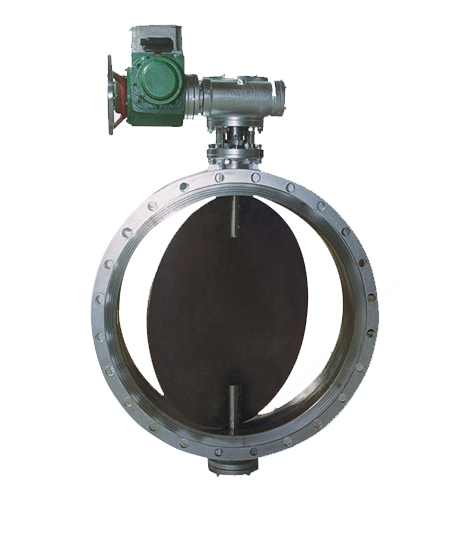The aeration butterfly valve is a crucial device widely used in ventilation, air conditioning systems, flue gas discharge, and dust removal systems. It is designed to control the flow of gases in low-pressure, large-diameter pipelines.

1. Basic Structure
The structure of the aeration butterfly valve is relatively simple and mainly consists of the following components:
1. Valve Body: The valve body is the main part of the aeration butterfly valve, usually made of cast iron, stainless steel, or carbon steel to ensure its strength and corrosion resistance.
2. Valve Disc: The valve disc is the core component of the aeration butterfly valve. It is typically disc-shaped and can rotate to regulate the gas flow.
3. Valve Stem: The valve stem connects the valve disc to the actuator, transmitting the operating torque to rotate the valve disc.
4. Actuator: The actuator includes manual, electric, or pneumatic devices used to control the opening of the valve disc, thus adjusting the gas flow.
5. Seal Ring: The seal ring is installed between the valve body and the valve disc to ensure good sealing performance when the valve is closed.
2. Working Principle
The working principle of the aeration butterfly valve is to control the gas flow in the pipeline by rotating the valve disc. When the valve disc is perpendicular to the direction of the airflow, the valve is in a fully open state, allowing gas to flow freely. When the valve disc is parallel to the direction of the airflow, the valve is in a closed state, completely blocking the gas flow. The angle of the valve disc can be adjusted between 0° and 90°, allowing for precise flow control.
3. Main Features
(1) Simple structure: The aeration butterfly valve has a simple structure with few components, making it compact, lightweight, and easy to install and maintain.
(2) Convenient operation: The aeration butterfly valve can be operated manually, electrically, or pneumatically, offering flexible and convenient adjustment.
(3) Good sealing performance: High-quality sealing materials ensure that the valve has good sealing performance when closed, effectively preventing gas leakage.
(4) Low flow resistance: The valve disc has low resistance within the pipeline, resulting in minimal pressure loss during gas flow, which improves system efficiency.
(5) Strong adaptability: The aeration butterfly valve is suitable for various ventilation and air conditioning systems, as well as for gas flow control in smoke exhaust and dust removal systems.
4. Application Fields
(1) HVAC systems: In the ventilation and air conditioning systems of buildings, aeration butterfly valves are used to regulate the airflow, controlling the indoor temperature and humidity.
(2) Industrial ventilation systems: In industrial production processes, aeration butterfly valves control the ventilation within factories, removing harmful gases and maintaining a good working environment.
(3) Flue gas emission systems: In large industrial equipment such as thermal power plants and steel mills, aeration butterfly valves are used to control the flow and emission of flue gas.
(4) Dust removal systems: In dust removal systems, aeration butterfly valves regulate the airflow, controlling the collection and discharge of dust, thereby improving dust removal efficiency.
Previous :
What Is a Flanged Plug Valve?Next :
Precautions for Installing Flanged Check Valves